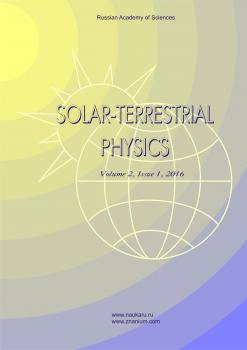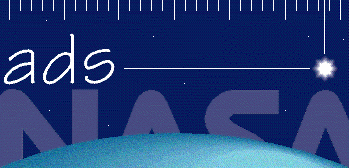с 01.01.2008 по настоящее время
Борок, Россия
Борок, Россия
We have studied the relationship of geomagnetic activity indices (Ap, Dst) on time intervals, equal to solar cycles (∼11 years), with solar activity indicators and heliospheric parameters. It is shown that the plots of the Ap and Dst indices versus solar activity indicators, as well as versus heliospheric parameters, i.e. solar wind and IMF parameters in the ascending and descending phases of solar activity cycles 21–24 do not coincide, which is indicative of the hysteresis phenomenon. The Ap and Dst indices form hysteresis loops with all parameters we analyze during cycles 21–24. The shape and area of the hysteresis loops, as well as the direction of rotation, clockwise or counterclockwise, depend significantly on indicators of solar activity, heliospheric parameters and change from cycle to cycle. We have found a tendency for the extension and area of the hysteresis loops to decrease from cycle 21 to cycle 24. Analysis of the variability in the shape and size of the hysteresis loops formed by the Ap and Dst indices with solar indicators and heliospheric parameters gives reason to believe that the obtained loops reflect the long-term evolution of the solar wind energy flux, which determines global geomagnetic activity and the magnetospheric ring current intensity in the ascending and descending phases of solar activity cycles 21‒24.
geomagnetic activity, solar wind, solar activity cycles, heliospheric parameters, hysteresis
1. Ahluwalia H.S. Ap time variations and interplanetary magnetic field intensity. J. Geophys. Res. 2000, vol. 105, no. A12, pp. 27,481-27,487. DOI:https://doi.org/10.1029/2000JA900124.
2. Bachmann K., White O.R. Observations of hysteresis in solar-cycle variations among seven solar-activity indicators. Solar Physics. 1994, vol. 150, pp. 347-357. DOI: 10.1007/ BF00712896.
3. Bruevich E.A., Kazachevskaya T.V., Katyushina V.V., Nusinov A.A., Yakunina G.V. Hysteresis of indices of solar and ionospheric activity during 11-year cycles. Geomagnetism and Aeronomy. 2016, vol. 56, no. 8, pp. 1075-1081. DOI:https://doi.org/10.1134/S0 01679321608003X.
4. Bruevich E.A., Bruevich V.V., Yakunina G.V. Cyclic variations in the solar radiation fluxes at the beginning of the 21st century.Moscow University Physics Bulletin. 2018, vol. 73, no. 2, pp. 216-222. DOI:https://doi.org/10.3103/S0027134918020030.
5. Deminov M.G., Nepomnyashchaya E.V., Obridko V.N. Solar activity indices for ionospheric parameters in the 23rd and 24th cycles. Geomagnetism and Aeronomy. 2020, vol. 60, pp. 1-6. DOI:https://doi.org/10.1134/S0016793220010053.
6. Dmitriev A.V., Suvorova A.V., Veselovsky I.S. Expected hysteresis of the 23-rd solar cycle in the heliosphere. Adv. Space Res. 2002, vol. 29, iss. 3, pp. 475-479. DOI:https://doi.org/10.1016/S0273-1177(01)00615-9.
7. Dmitriev A.V., Suvorova A.V., Veselovsky I.S. Statistical Characteristics of the heliospheric plasma and magnetic field at the Earth’s orbit during four solar cycles 20-23. Handbook on Solar Wind: Effects, Dynamics and Interactions. Chapter 2. New York, NOVA Science Publ., 2009, pp. 81-144.
8. Donnelly R.F. Solar UV spectral irradiance variations. J. Geomagn. Geoelectr. Suppl. 1991, vol. 43, pp. 835-842.
9. Hathaway D.H. The Solar Cycle. Living Rev. Solar Phys. 2015, vol. 12(4). DOI:https://doi.org/10.1007/lrsp-2015-4.
10. Holappa L., Mursula K., Asikainen T. A new method to estimate annual solar wind parameters and contributions of different solar wind structures to geomagnetic activity. J. Geophys. Res: Space Phys. 2014, vol. 119, pp. 9407-9418. DOI:https://doi.org/10.1002/2014JA020599.
11. Ishkov V.N. Reduced and extended periods of solar activity: Monitoring features and key facts. Proc. National Yearly Conf. “Solar and Solar-Terretstrial Physics 2013”. Saint Petersburg, 2013. P. 111-114 (In Russian).
12. Janardhan P., Bisoi S.K., Ananthakrishnan S., Tokumaru M., Fujiki K., Jose L., Sridharan R. A 20 year decline in solar photospheric magnetic fields: Inner-heliospheric signatures and possible implications. J. Geophys. Res.: Space Phys. 2015, vol. 120, pp. 5306-5317. DOI:https://doi.org/10.1002/2015JA021123.
13. Kane R.P. Solar cycle variation of foF2. J. Atmos. Terr. Phys. 1992, vol. 54, no. 9, pp. 1201-1205.
14. Kane R.P. Lags, hysteresis, and double peaks between cosmic rays and solar activity. J. Geophys. Res. 2003, vol. 108, iss. A10, 1379. DOI:https://doi.org/10.1029/2003JA009995.
15. Kilcik A., Yiğit E., Yurchyshyn V., Ozguc A., Rozelot J.P. Solar and Geomagnetic Activity Relation for the Last two Solar Cycles. Sun and Geosphere. 2017, vol. 12/1, pp. 31-39.
16. Kurazhkovskaya N.A., Zotov O.D., Klain B.I. Relationship between geomagnetic storm development and the solar wind parameter β. Solar-Terr. Phys. 2021, vol. 7, iss. 4. pp. 24-32. DOI:https://doi.org/10.12737/stp-74202104.
17. McIntosh S.W., Leamon R.J., Egeland R., Dikpati M., Fan Y., Rempel M. What the sudden death of solar cycles can tell us about the nature of the solar interior. Solar Phys. 2019, vol. 294, no. 88. DOI:https://doi.org/10.1007/s11207-019-1474-y.
18. Mavromichalaki H., Belehaki A., Rafios X. Simulated effects at neutron monitor energies: evidence for a 22-year cosmic-ray variation. Astron. Astrophys. 1998, vol. 330, pp. 764-772.
19. Ortiz de Adler N., Elias A.G. Latitudinal variation of foF2 hysteresis of solar cycles 20, 21 and 22 and its application to the analysis of long-term trends. Ann. Geophys. 2008, vol. 26, pp. 1269-1273. DOI:https://doi.org/10.5194/angeo-26-1269-2008.
20. Özgüç A., Ataç T. Effects of hysteresis in solar cycle variations between flare index and cosmic rays. New Astronomy. 2003, vol. 8, iss. 8, pp. 745-750. DOI:https://doi.org/10.1016/S1384-1076(03)00063-0.
21. Özgüç A., Ataç T., Antalova A. Effects of hysteresis of some solar indices during the past three solar cycles 20, 21 and 22. Proc. 1st Solar and Space Weather Euroconference “The Solar Cycle and Terrestrial Climate”. Santa Cruz de Tenerife, Spain, 2000. SP-463. pp. 403-405.
22. Özgüç A., Kilcik A., Rozelot J.P. Effects of hysteresis between maximum CME speed index and typical solar activity indicators during cycle 23. Solar Phys. 2012, vol. 281, pp. 839-846. DOI:https://doi.org/10.1007/s11207-012-0087-5.
23. Özgüç A., Kilcik A., Georgieva K., Kirov B. Temporal Offsets between maximum CME speed index and solar, geomagnetic, and interplanetary indicators during solar cycle 23 and the ascending phase of cycle 24. Solar Phys. 2016, vol. 291, pp. 1533-1546. DOI:https://doi.org/10.1007/s11207-016-0909-y.
24. Papitashvili V.O., Papitashvili N.E., King J.H. Solar cycle effects in planetary geomagnetic activity: Analysis of 36-year long OMNI dataset. Geophys. Res. Lett. 2000, vol. 27, no. 17, pp. 2797-2800.
25. Penn M.J., Livingston W. Long-term evolution of sunspot magnetic fields. Proc. IAU Symp. “The Physics of Sun and Star Spots”. 2010, vol. 273, pp. 126-133.
26. Ptitsyna N.G., Danilova O.A., Tyasto M.I. Phenomena of hysteresis in the cutoff rigidity of cosmic rays during the superstorm of November 7-8, 2004. Geomagnetism and Aeronomy. 2021, vol. 61, pp. 483-491. DOI:https://doi.org/10.1134/S0016793221040137.
27. Reda R., Giovannelli L., Alberti T. On the time lag between solar wind dynamic parameters and solar activity UV proxies. Adv. Space Res. 2023, vol. 71, iss. 4, pp. 2038-2047. DOI:https://doi.org/10.1016/j.asr.2022.10.011.
28. Samsonov A., Bogdanova Y.V., Branduardi-Raymont G., Safrankova J., Nemecek Z., Park J.-S. Long-term variations in solar wind parameters, magnetopause location, and geomagnetic activity over the last five solar cycles. J. Geophys. Res.: Space Phys. 2019, vol. 124, pp. 4049-4063. DOI: 10.1029/ 2018JA026355.
29. Schreiber H. On the periodic variations of geomagnetic activity indices Ap and ap. Ann. Geophys. 1998, vol. 16, pp. 510-517.
30. Singha M., Singha Y.P., Badruddin. Solar modulation of galactic cosmic rays during the last five solar cycles. Journal of Atmospheric and Solar-Terrestrial Physics. 2008, vol. 70, pp. 169-183.
31. Verbanac G., Vršnak B., Veronig A., Temmer M. Equatorial coronal holes, solar wind high-speed streams, and their geoeffectiveness. Astronomy Astrophys. 2011, vol. 526, no. A20. DOI:https://doi.org/10.1051/0004-6361/201014617.
32. Veselovsky I.S., Dmitriev A.V., Suvorova A.V. Average parameters of the solar wind and interplanetary magnetic field at the Earth’s orbit for the last three cycles. Solar System Research. 1998, vol. 32, no. 4, pp. 310-315.
33. Yermolaev Y.I., Yermolaev M.Y., Lodkina I.G., Nikolaeva N.S. Statistical investigation of heliospheric conditions resulting in magnetic storms. Cosmic Research. 2007, vol. 45, no. 1, pp. 1-8. DOI:https://doi.org/10.1134/S0010952507010017.
34. Yermolaev Y.I., Lodkina I.G., Khokhlachev A.A., Yermolaev M.Y. Peculiarities of the heliospheric state and the solar-wind/magnetosphere coupling in the era of weakened solar activity. Universe. 2022, vol. 8, 495. DOI:https://doi.org/10.3390/universe8100495.
35. Zotov O.D., Klain B.I., Kurazhkovskaya N.A. Influence of the solar wind parameter on statistical characteristics of the Ap index in the solar activity cycle. Solar-Terr. Phys. 2019, vol. 5, no. 4, pp. 46-52. DOI:https://doi.org/10.12737/stp-54201906.
36. URL: https://spdf.gsfc.nasa.gov/pub/data/omni/low_res_omni/ (accessed December 8, 2022).
37. URL: https://omniweb.gsfc.nasa.gov/html/ow_data.html/ (accessed December 8, 2022).

















